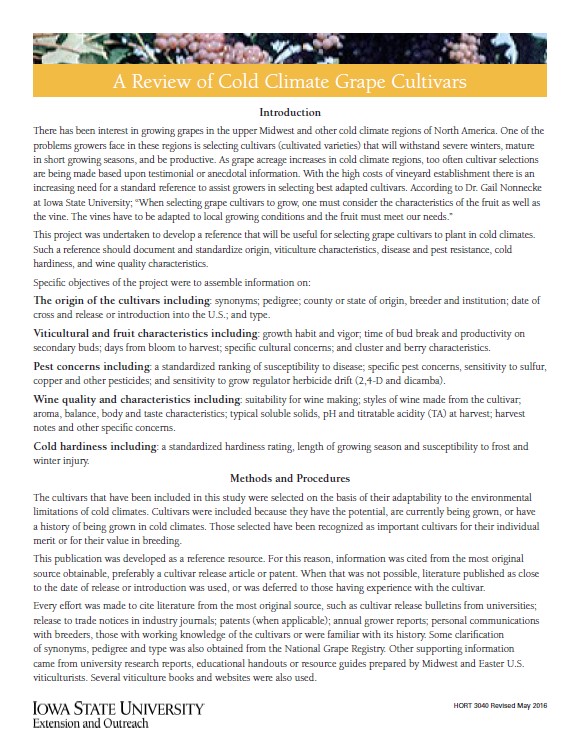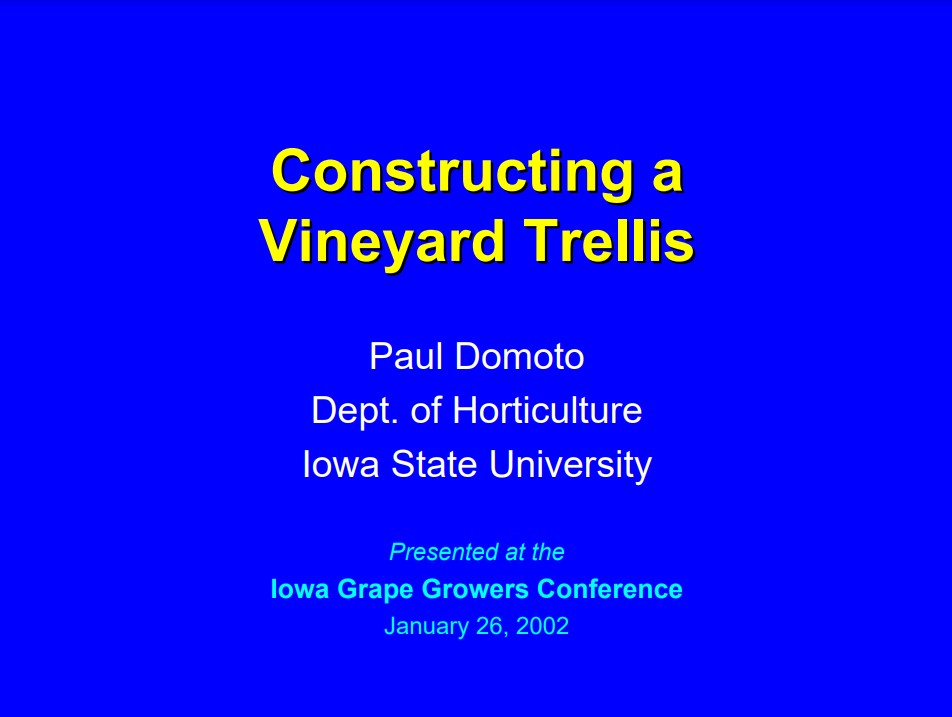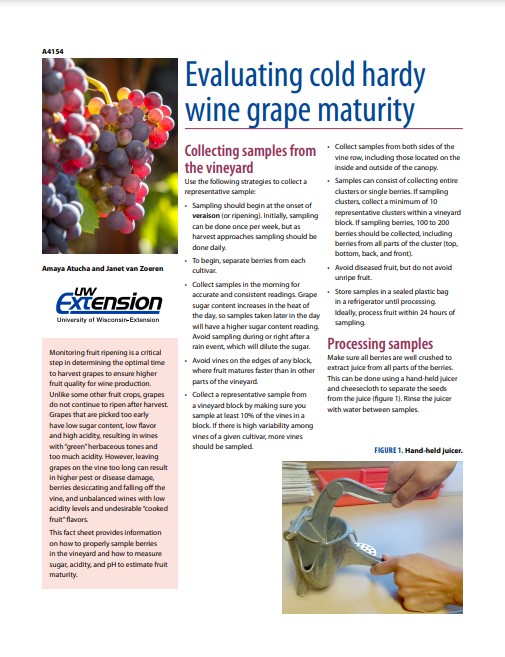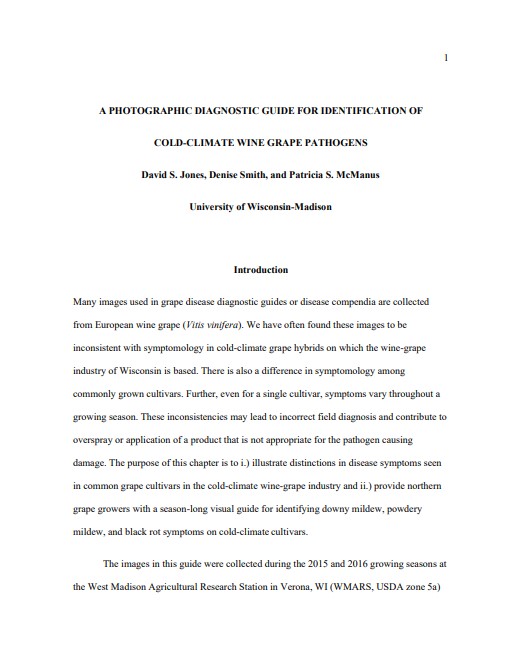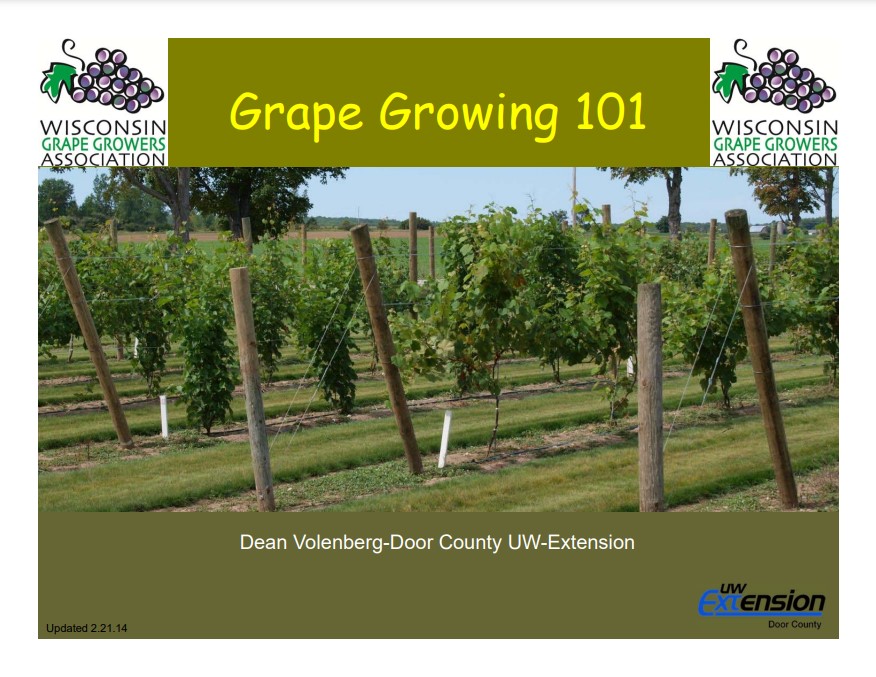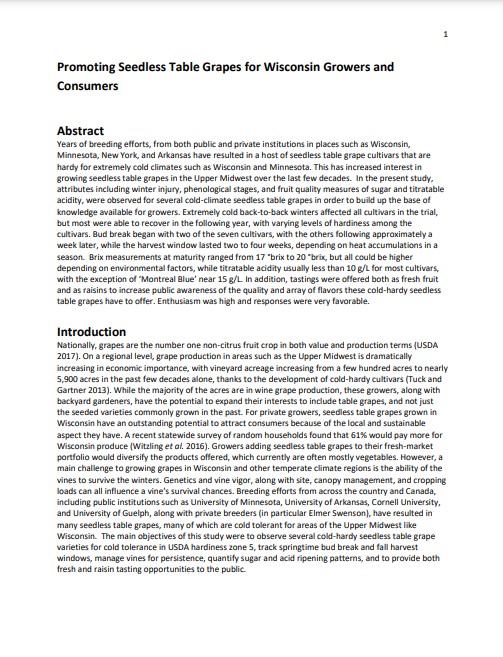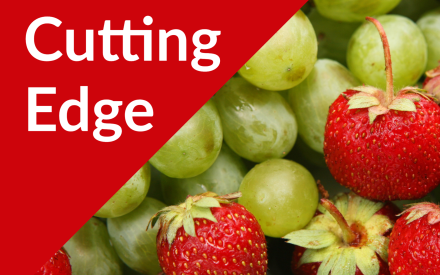Table Grapes
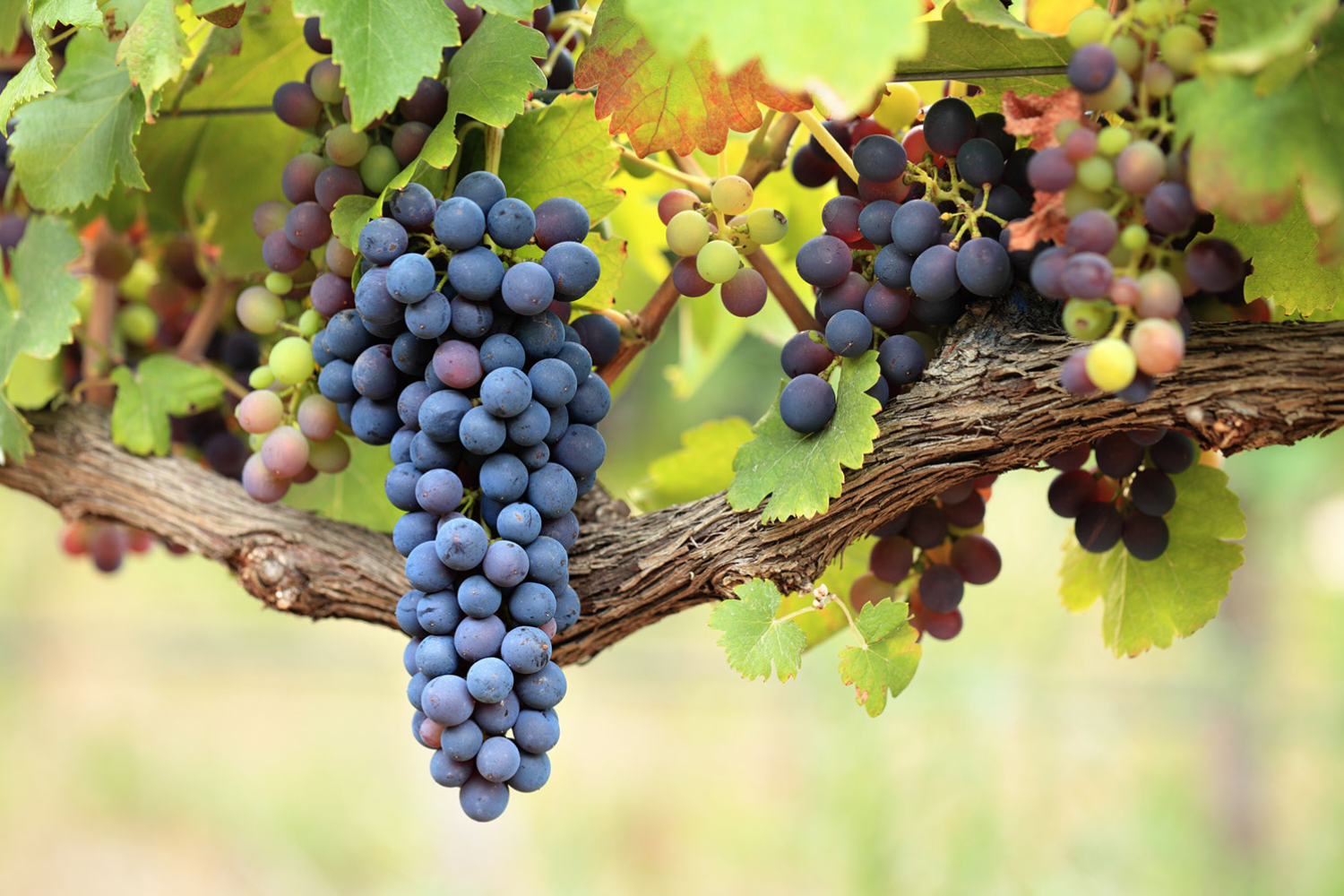
TABLE GRAPES
Crop Profile
Get Involved!
Click here to sign up for the Wisconsin Fruit newsletter.
Wine grape production in Wisconsin is now an established industry, thanks in part to work by the University of Wisconsin and University of Minnesota to identify suitable cultivars and develop agronomic best practices. There are great resources for growers interested in wine grapes at the UW Fruit Program website.
Fresh-eating table grapes (aka seedless table grapes) are not yet grown extensively in Wisconsin due primarily to lack of proven cultivars. But, work is ongoing to change that. A first round of seedless table grape variety trials were conducted in WI from 2007-2014. Of the many cultivars tested, ‘Reliance’, ‘Somerset Seedless’, ‘Mars’, and ‘Montreal Blue’ were the most successful. However, without much at-scale production experience in Wisconsin, growers are still largely on their own to try these cultivars.
A new round of trials was initiated by UW in 2022 to evaluate three new advanced selections from the U of MN breeding program (MN1296, MN1325, MN1369) in comparison to the winners from the previous trial. Stay tuned for trial results.
Production
Grape enterprises (wine or table) have three main components: the right cultivars for your site and buyer(s), the trellis and production system, and the marketing plan. All three components have to work in coordination to be a successful grape grower.
Table grapes are produced much the same was as wine grapes. Thus, the many educational resources available on establishment, trellising, and pest management of wine grapes are applicable to table grape production. Many of those resources are provided below. Where table grapes differ is they are harvested as a fresh-eating product that must be handled as any other fresh-eating crop like blueberries or raspberries. Food safety and post-harvest storage conditions are crucial to providing a safe and high-quality product to consumers.
Grape growers in Wisconsin have approached their enterprises in different ways. Many start small with a few hundred feet of trellis and 5-10 cultivars to see what works for them. Others have started with a few acres either as part of their own winery or in cooperation with a known buyer. Planting and growing grapes is relatively easy as grapes are widely adapted and generally vigorous. Growing grapes for profit however requires experience and detailed knowledge of cultivar selections, trellising, canopy management, fertility management, pest management, and post-harvest processing. As such, we recommend reading through the publications below and attending conferences and field days before starting.
Research Status and Priorities
The UW grape research program has focused largely on evaluating and identifying wine and table cultivars that will perform reliably in our challenging climate and that have the attributes desired by markets. The Wisconsin Fruit News website and YouTube channel are the best sources for the most up-to-date information coming out of UW. You can find a selection of prior research results and reports in the “Resources and Information” section of this website. Also, be sure to view the presentations discussing which cultivars work best in Wisconsin.
In 2022, we established new table grape cultivar trials at six locations in Wisconsin to evaluate the performance of new material from the University of Minnesota in comparison to the top performers from our previous trials. Research results will be posted at this site.
Markets
There are currently no large-scale grape processors in Wisconsin buying table or wine grapes. Instead, growers have to make connections with individual buyers. Luckily, we have many vibrant wineries in Wisconsin looking to buy Wisconsin-grown grapes. The Wisconsin Grape Growers Association is a great place to network with other grape growers or buyers in the region. Pricing, volumes, and product specifications must all be worked out directly between grower and buyer.
Though there is potential to sell large volumes of seedless table grapes, there is currently only limited production, most of which is sold direct to consumers via farmers markets or at farm stands. There is considerable opportunity to build table grape markets as product selection in most grocery stores is limited to grapes imported from outside the region. Much like tomatoes, locally-grown grapes from unique cultivars can stand out in the marketplace and command a favorable price.
Plant Material
Choosing the right cultivar depends on two main things. What is your market and how “cold” is your site. In other words, how long is your frost-free growing season and how cold do you get in the winter? This depends in part on where in Wisconsin you want to grow grapes and in part on your specific micro-climate. How do you choose the right cultivar(s) for your site? First, start with the resources on this page and learn what the research says about which cultivars have worked and which have not. The Iowa State guide to cold climate grapes is a bit dated (published in 2016), but is still the main guide in use today listing the many cultivar options and their pros and cons in our region of the US. Then, find the grape grower nearest to you and strike up a conversation. Learn what has worked or not worked for them. Finally, because no two farms are the same when it comes to growing grapes, we recommend you trial at least five cultivars on a smaller scale for a few years to learn what works best on your site. Double A Vineyards and Northeastern Vine Supply, Inc. are two sources for buying plant material.
Resources and information
Read
Below are some curated publications to help you learn more about growing grapes in Wisconsin. The University of Minnesota offers a free online course for an in-depth opportunity to learn about vineyard management.
Watch
For more videos and webinars, check out Wisconsin Fruit’s Grapes Playlist – YouTube.
Amaya Atucha (UW-Madison)
Trent Davis and Miguel Gomez (Cornell University)
Listen
More Resources
University of Wisconsin-Madison Fruit and Nut Compass (financial planning tool)
UW-Madison Fruit Program – Grape Resources
Wisconsin Grape Growers Association


